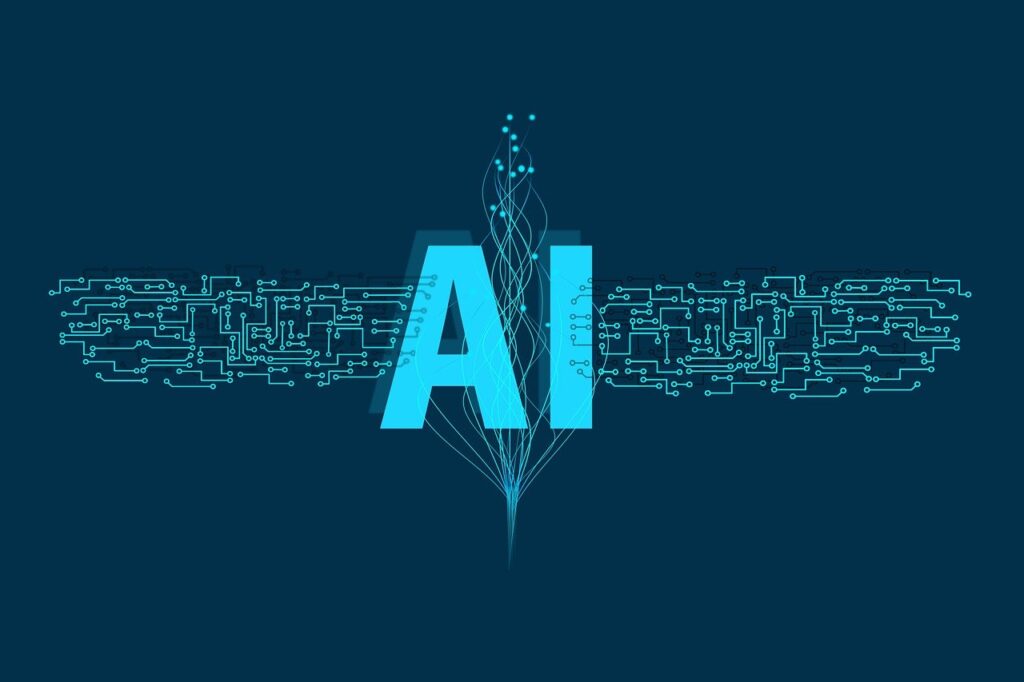In the fast-paced world of innovation and intellectual property, securing a patent is often seen as a gateway to protecting your creations and potentially reaping the financial rewards of your ingenuity. Patents are, in essence, exclusive rights granted to inventors, ensuring that their inventions are protected from unauthorized use for a certain period.
However, as the volume of patents continues to grow exponentially, so too does the need for more efficient and accurate ways to evaluate their quality and relevance. AI-powered patent evaluation metrics, a transformative approach that leverages the power of artificial intelligence and machine learning to revolutionize how we assess patents. In this comprehensive guide, we will explore the intricacies of AI-powered patent evaluation metrics, delving into the fundamental concepts, applications, challenges, and the promising future that lies ahead.

Understanding Patents and Their Importance
A patent is a legal document that grants the inventor exclusive rights to their invention, preventing others from making, using, selling, or importing the patented creation without the inventor’s permission. Patents come in various forms, including utility patents, design patents, and plant patents, each serving different purposes.
Patents serve as a crucial element in the realm of intellectual property, offering inventors protection and encouraging innovation. They are the proverbial carrots dangled before the creative minds, incentivizing them to push the boundaries of what’s possible. The idea of granting exclusive rights to inventors is not new; it dates back centuries and is enshrined in the United States Constitution, demonstrating the importance society has historically placed on intellectual property.
The Role of Patents in Innovation
Patents play a pivotal role in fostering innovation and technological advancement. By providing inventors with a legal monopoly on their creations for a set period (usually 20 years from the date of filing), patents encourage inventors to disclose their inventions to the public. This disclosure, in turn, contributes to the collective knowledge pool and fuels further innovation.
The benefits of patents extend beyond individual inventors to society as a whole. Patents incentivize companies to invest in research and development, leading to new products and technologies that improve our daily lives. In essence, they drive economic growth and technological progress, making the evaluation of patents a matter of great significance.
The Need for Effective Patent Evaluation
As the number of patents continues to grow worldwide, the significance of effective patent evaluation becomes increasingly evident. The sheer volume of patents can overwhelm patent offices, making it challenging to efficiently and accurately assess the quality, novelty, and significance of each invention. Manual evaluation processes, which have traditionally been the cornerstone of patent examination, are becoming increasingly unsustainable in the face of this patent explosion.
To address these challenges, the integration of AI-powered patent evaluation metrics becomes not just a luxury but a necessity. AI promises to streamline the evaluation process, enhance accuracy, and provide a more holistic view of a patent’s potential. By harnessing AI and machine learning, we can create a dynamic and adaptable system that not only keeps pace with the growing number of patents but also ensures that the best inventions are duly recognized and protected.
The traditional approach to patent evaluation primarily involves manual processes, requiring human patent examiners to review and analyze patent applications. These processes consist of two main components: patent search and legal analysis.
Patent Search
Patent examiners begin by conducting a patent search to identify prior art – existing inventions that are relevant to the patent application under review. This process is essential to determine whether the invention is novel and non-obvious. It involves searching through patent databases, scientific journals, and other sources to find similar inventions or ideas that predate the application.
Legal Analysis
Once relevant prior art is identified, the patent examiner performs a legal analysis to assess whether the patent application meets the criteria for patentability, such as novelty, non-obviousness, and utility. This involves a comprehensive review of the patent claims and a legal judgment regarding whether the invention deserves patent protection.
While manual evaluation methods have been the cornerstone of patent examination for many years, they have notable limitations. One of the most glaring issues is the sheer volume of patents being filed, which can overwhelm patent offices. Additionally, manual evaluation is time-consuming, costly, and susceptible to human error and bias. In this context, the integration of AI-powered patent evaluation metrics emerges as a game-changer.
AI and Machine Learning in Patent Evaluation
Artificial intelligence, particularly machine learning, has made remarkable strides in recent years. This technological advancement has created opportunities for AI to play a pivotal role in patent evaluation. But how does AI work in the context of patents?
AI systems for patent evaluation are typically designed to replicate and even surpass certain aspects of human cognition. These systems use advanced algorithms and machine learning models to analyze vast amounts of data related to patents, inventions, and prior art. They can perform tasks like natural language processing (NLP) to understand and extract valuable information from patent documents, as well as image recognition to interpret diagrams and illustrations. Additionally, AI can employ predictive analytics to assess the potential commercial viability of an invention, making patent evaluation a more data-driven and objective process.
Benefits of AI-Powered Patent Evaluation
The integration of AI in patent evaluation brings a multitude of benefits that address many of the shortcomings associated with traditional methods. These advantages can be categorized as:
Speed and Efficiency
AI can analyze and compare a vast number of patents quickly, significantly reducing the time required for evaluation. This speed is particularly crucial in today’s fast-paced technological landscape where innovations emerge rapidly.
Enhanced Accuracy
AI systems are designed to minimize human error and bias. By leveraging algorithms and data-driven analysis, they can provide more objective and accurate assessments of patent applications.
Cost Reduction
AI-powered patent evaluation can reduce the operational costs associated with manual processes. This is an especially attractive benefit for patent offices and organizations dealing with a high volume of patent applications.
AI and Machine Learning Algorithms Used in Patent Evaluation
AI in patent evaluation relies on a combination of machine learning techniques and algorithms to process and analyze patent-related data effectively. Some of the key AI and machine learning methods used in patent evaluation include:
Natural Language Processing (NLP)
NLP enables AI systems to understand and extract meaningful information from patent documents, which are typically dense and filled with technical jargon. NLP can help identify critical concepts, relationships, and patterns within the text, aiding in the assessment of patent claims and descriptions.
Image Recognition
Inventions often involve visual representations and diagrams to explain the underlying concepts. AI systems can use image recognition algorithms to interpret these diagrams, enhancing their understanding of the inventions being patented.
Predictive Analytics
Predictive analytics uses historical data and patterns to make informed predictions about the future. In patent evaluation, AI can leverage predictive analytics to assess the potential commercial viability of a patent by examining factors such as market trends, industry dynamics, and technology adoption rates.
Key Metrics in AI-Powered Patent Evaluation
Novelty Assessment
Novelty assessment is a critical component of patent evaluation. It determines whether the invention is genuinely new and not already disclosed in prior art. AI plays a vital role in this process by analyzing patent documents and comparing them to existing inventions. AI can identify similarities and differences, helping patent examiners or evaluators make more informed decisions.
AI’s ability to process and understand natural language enables it to recognize relevant information within patent documents, even when the wording or phrasing differs. It can also identify synonyms and related concepts, allowing for a more comprehensive assessment of novelty.
Inventive Step Analysis
Inventive step analysis, often referred to as non-obviousness, assesses whether the invention involves an inventive step beyond what is considered common knowledge in the field. AI assists in this evaluation by analyzing the state of the art, which includes prior patents and scientific literature, to determine the level of innovation present in the invention.
AI systems can review and compare the patent application against a vast database of prior art to identify similarities and differences. By using machine learning models, these systems can highlight whether the inventive step is truly groundbreaking or merely an incremental improvement.
Technological Significance Evaluation
Determining the technological significance of an invention is crucial in patent evaluation. AI’s role in this aspect lies in its ability to assess the potential impact of the invention on the technological landscape.
By analyzing the content and context of patent documents, AI can identify inventions that are poised to disrupt existing technologies or create new paradigms. It can also gauge the technological significance of inventions by considering factors such as the number of citations, the impact on industry standards, and the potential for widespread adoption.
Market Potential and Commercial Viability
Assessing the market potential and commercial viability of a patent is essential for inventors and businesses seeking to maximize their return on investment. AI-driven predictive analytics can provide valuable insights in this regard.
AI systems can evaluate market trends, industry dynamics, and economic indicators to estimate the potential demand for an invention. They can also analyze patent data to identify patterns that may suggest market readiness for a specific technology. Furthermore, AI can help inventors identify potential licensees or partners for their inventions, facilitating the commercialization process.
Citation Analysis
Citation analysis is a key metric in patent evaluation, as it provides insight into how a patent is referenced by subsequent patents. AI-powered systems can track and analyze citations to determine the influence and relevance of a patent within its technological field.
By assessing citation patterns, AI can identify patents that have had a significant impact on subsequent inventions. This information can be crucial for understanding the influence and importance of a particular patent and may influence decisions regarding patent maintenance or licensing.
Litigation Risk Assessment
Litigation risk assessment involves evaluating the likelihood that a patent will be involved in legal disputes or infringement cases. AI can assist in predicting litigation risks by analyzing historical patent litigation data and identifying patents with characteristics that make them more likely to be subject to legal disputes.
AI can consider factors such as the breadth of patent claims, the level of competition in the relevant industry, and the history of similar patents involved in litigation. By providing insights into potential legal challenges, AI can help inventors and businesses make informed decisions about their patent strategies.
Comprehensive Patent Scorecards
To provide a holistic evaluation of patents, AI-powered systems often create comprehensive patent scorecards. These scorecards integrate multiple metrics, such as novelty, inventive step, technological significance, market potential, citation analysis, and litigation risk, into a unified assessment.
A patent scorecard offers a summarized view of a patent’s strengths and weaknesses, making it easier for inventors, patent examiners, and businesses to make informed decisions. The use of AI in generating these scorecards enhances their objectivity and accuracy, providing a valuable tool for patent evaluation.
Continued advancements in AI and machine learning are enhancing the sophistication of these evaluation metrics, offering even greater accuracy and depth in patent assessment. As a result, the patent landscape is becoming more transparent and accessible, encouraging inventors and innovators to participate more actively in the patent system.

Leave a Reply